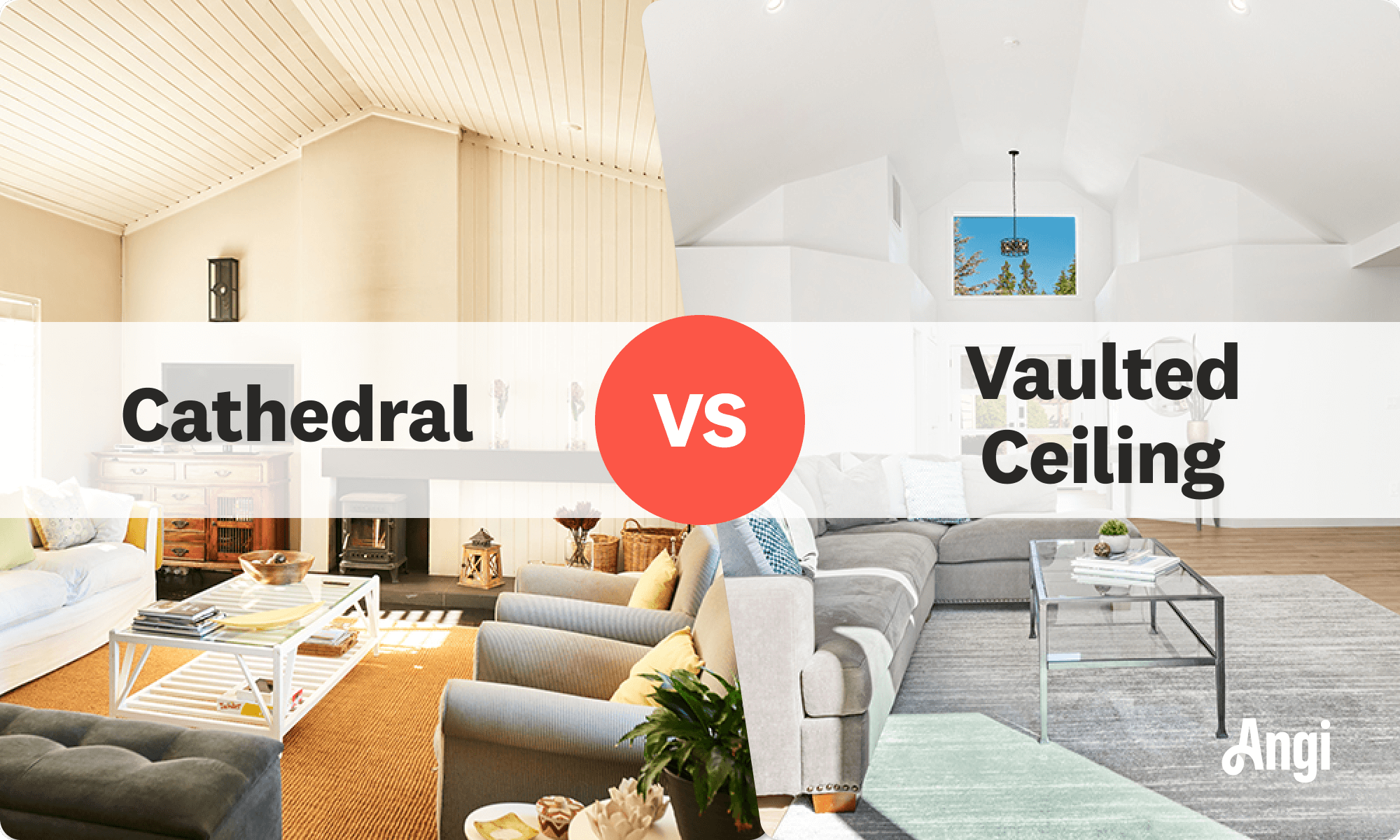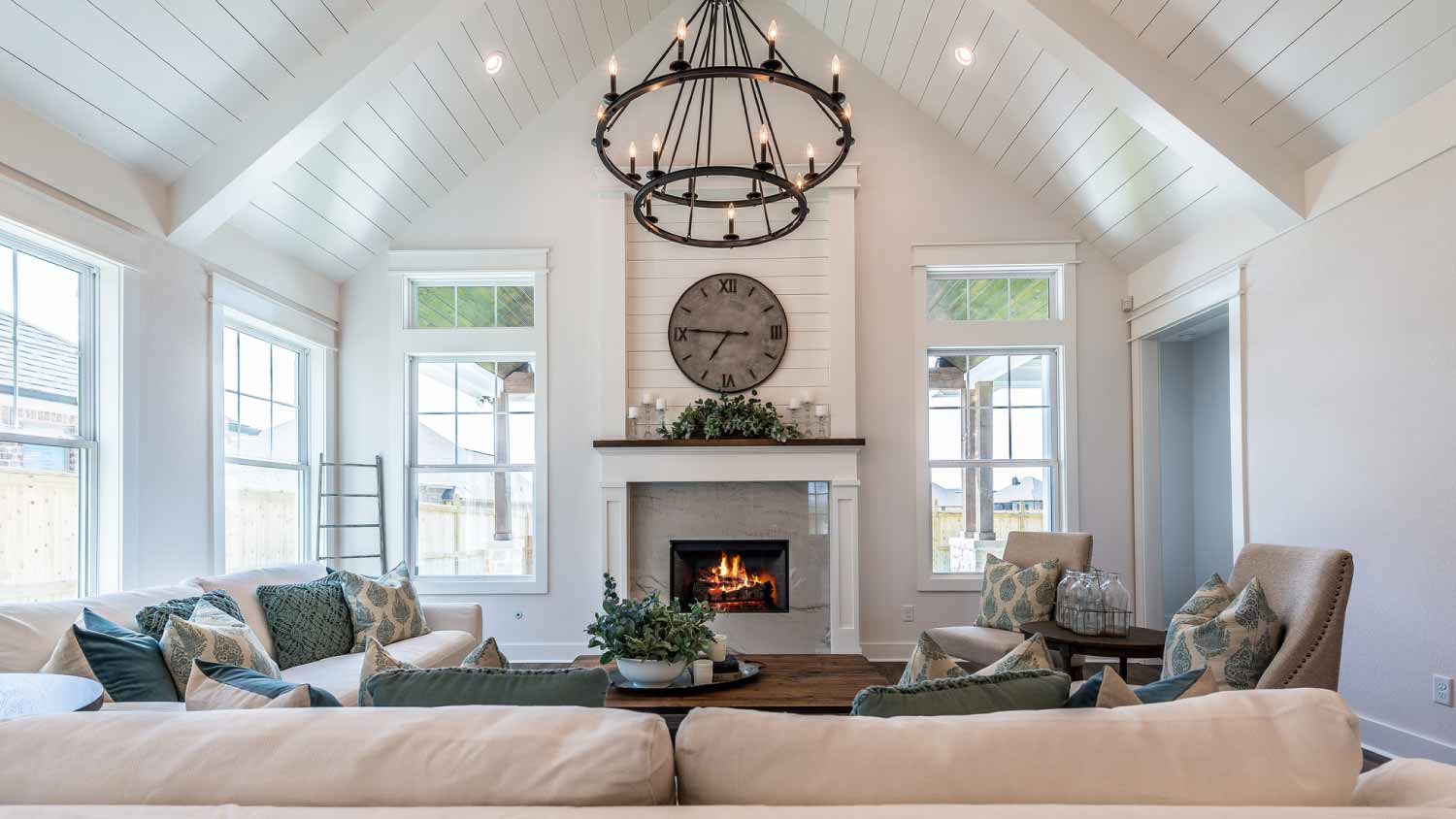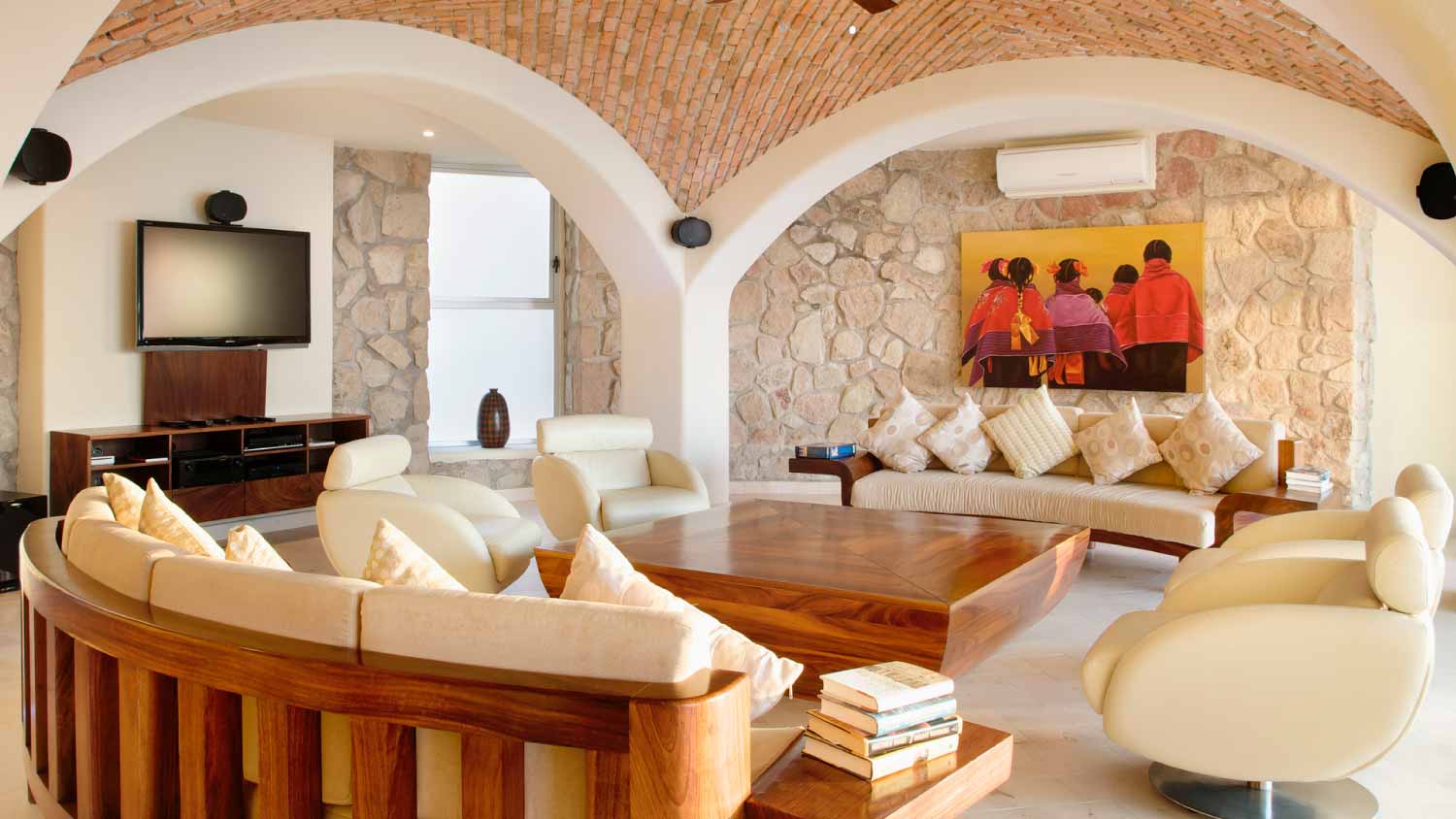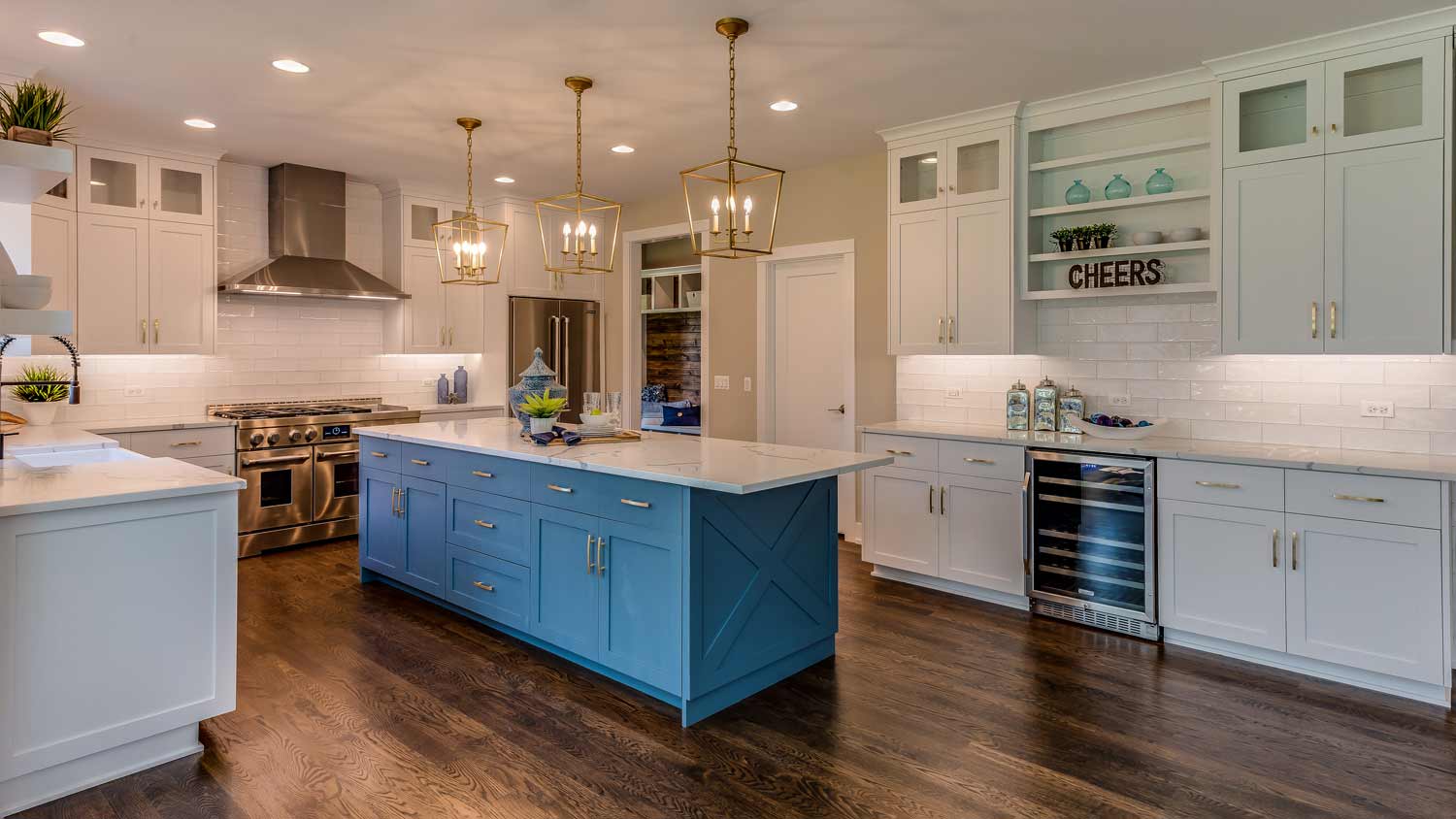
Brick walls can add character and elegance to interior and exterior spaces. Use this brick wall cost guide to see the price range for adding one to your home.
Take a peek into the vault(ed) ceiling


Cathedral ceilings and vaulted ceilings achieve many of the same goals—creating a larger look and adding design detail—but in different ways.
Cathedral ceilings are popular for their clean lines and symmetry.
Vaulted ceilings offer more opportunities for customization.
Raised ceilings cost between $20,000 and $50,000 to install, and cathedral ceilings can cost less than vaulted ceilings because they’re installed on the ceiling trusses.
Whether you’re building a new home or just want to redesign your existing home, a raised ceiling—like a cathedral or vaulted ceiling—can make a room appear larger and create space for windows and skylights. However, they differ in key ways when it comes to their construction and the aesthetic they offer. This guide breaks down the differences between cathedral and vaulted ceilings to see which would work best in your home.

It’s easy to get a cathedral ceiling and a vaulted ceiling confused. After all, they’re both types of raised ceilings that add height and a look of grandeur to a room, but they’re constructed differently. A cathedral ceiling follows the roofline and is installed on the roof trusses, while a vaulted ceiling sits below the roof trusses and is self-supporting. A vaulted ceiling can also be curved, whereas cathedral ceilings are sloped.
Installing a vaulted ceiling can cost more than a cathedral ceiling, but the final cost depends on the size of the space, the existing structure, and the type of vaulted ceiling you choose. If you know a raised ceiling is a must-have for you, speak with a ceiling pro who can discuss your options.

Cathedral ceilings have two symmetrical sides that slope upward, following the pitch of the roof and meeting in a ridge below the peak. They’re named for the place where they originated—cathedrals. Historic and even modern cathedrals are known for their soaring ceilings and high walls. A cathedral ceiling brings a similar grandeur into your home and creates a more open space.
| Pros | Cons |
|---|---|
| Creates a larger look and feel | More expensive than a standard ceiling |
| Cathedral roof trusses make it easier to install than in the past | Difficult to clean and change lightbulbs |
| Allows for large windows and skylights for more natural light | May increase utility bills if there isn’t proper air circulation |
Best for:
Homes that would benefit from a symmetrical look
Households with a tighter building or remodeling budget
Homeowners who want more natural light in their space
A cathedral ceiling creates beautiful symmetry in a space and makes a room feel bigger than it is. Because roof trusses can be manufactured to support a cathedral ceiling, installation isn’t as difficult as it was in the past when it had to be custom-built. Cathedral ceilings also provide the opportunity to add large windows to a room and let in more natural light.
Cathedral ceilings, while easier to install than in the past, still add costs to your ceiling project because they require more labor and trusses that are built specifically for cathedral ceilings rather than standard ceilings. Additionally, cathedral ceilings aren’t the most energy-efficient option because heat rises, and the room will need proper air circulation or additional heating to keep the living area comfortable.

A vaulted ceiling is similar to a cathedral ceiling in that it dramatically raises the ceiling, but it’s self-supporting rather than being installed on the roof trusses. For instance, a vaulted ceiling sits below the roofline and doesn’t have to follow it. It doesn’t have to be symmetrical and can be curved (instead of sloped). This allows for several different ceiling vault types that can complement the overall design of a space.
| Pros | Cons |
|---|---|
| Offers a lavish look and feel | Not the most energy-efficient option |
| More customizable than cathedral ceilings | Difficult to clean or change lightbulbs |
| Can include skylights | Installation is more complicated because it’s constructed below the roof |
Best for:
Homes that would benefit from an asymmetrical look or curved ceiling
Homeowners who want a custom look and design
Households with a larger building or remodeling budget
A vaulted ceiling offers more than a cathedral ceiling in terms of customization. The curve of a vaulted ceiling can reach between the sidewalls or form a dome in the center of the room. Vaulted ceilings can also be sloped and feature asymmetrical designs that work well in modern and contemporary homes.
Vaulted ceilings come with the same energy efficiency challenges as cathedral ceilings. Because the ceiling is higher, heat will rise and keeping the living area comfortable requires adequate air circulation or more heat, which can increase utility bills. A vaulted ceiling is also more expensive to install than a standard or cathedral ceiling because it must be custom-built to fit the space.
Making the decision between a cathedral ceiling and a vaulted ceiling means taking a few factors into consideration. Here’s how the two ceiling types stack up in terms of appearance, customizations, installation, and price.
The winner of the appearance category comes down to the actual design and how it fits into the space. Both types of ceilings can be customized with beams, skylights, or other accents, though as far as the design itself, vaulted ceilings offer more customization options.
While cathedral ceilings follow the roofline by definition, vaulted ceilings offer many opportunities for customization. They can be curved, domed, or have asymmetrical slopes and angles. You can add one-of-a-kind molding and detailing to enhance the space's unique look.
Cathedral ceilings follow the roofline, so while the trusses cost extra, installing a cathedral ceiling is a more straightforward process. Installing a vaulted ceiling requires more care to build the support structure and curve the drywall sheets to fit.
The cost to install a raised ceiling falls between $20,000 and $50,000, but the price varies with the type of raised ceiling you choose and whether you install it during the initial construction phase or find ways to raise an existing ceiling.
Installing a cathedral ceiling during the initial construction costs less than installing a vaulted ceiling. However, the costs differ if you want to install either in an existing home. It’s best to get a consultation and quote from a local ceiling contractor who can help you transform your space.
From average costs to expert advice, get all the answers you need to get your job done.

Brick walls can add character and elegance to interior and exterior spaces. Use this brick wall cost guide to see the price range for adding one to your home.

Recessed living rooms used to be popular but have fallen out of favor. This guide discusses the cost to raise a sunken living room to modernize your home.

Installing a dumbwaiter can save you time and energy. Learn how much a dumbwaiter costs with this guide.

An unexplained smell in your home could come from several sources. Use this guide to help you identify what could be causing it.

If you’re replacing your roof or flooring, you might be wondering, “How much plywood do I need?” The answer comes through a simple calculation.

Contractors expect you to get multiple quotes and know they won’t win your business every time. If you’re wondering how to tell a contractor you went with someone else, an honest and kind approach is key. We’ll cover what to do (and say) here.